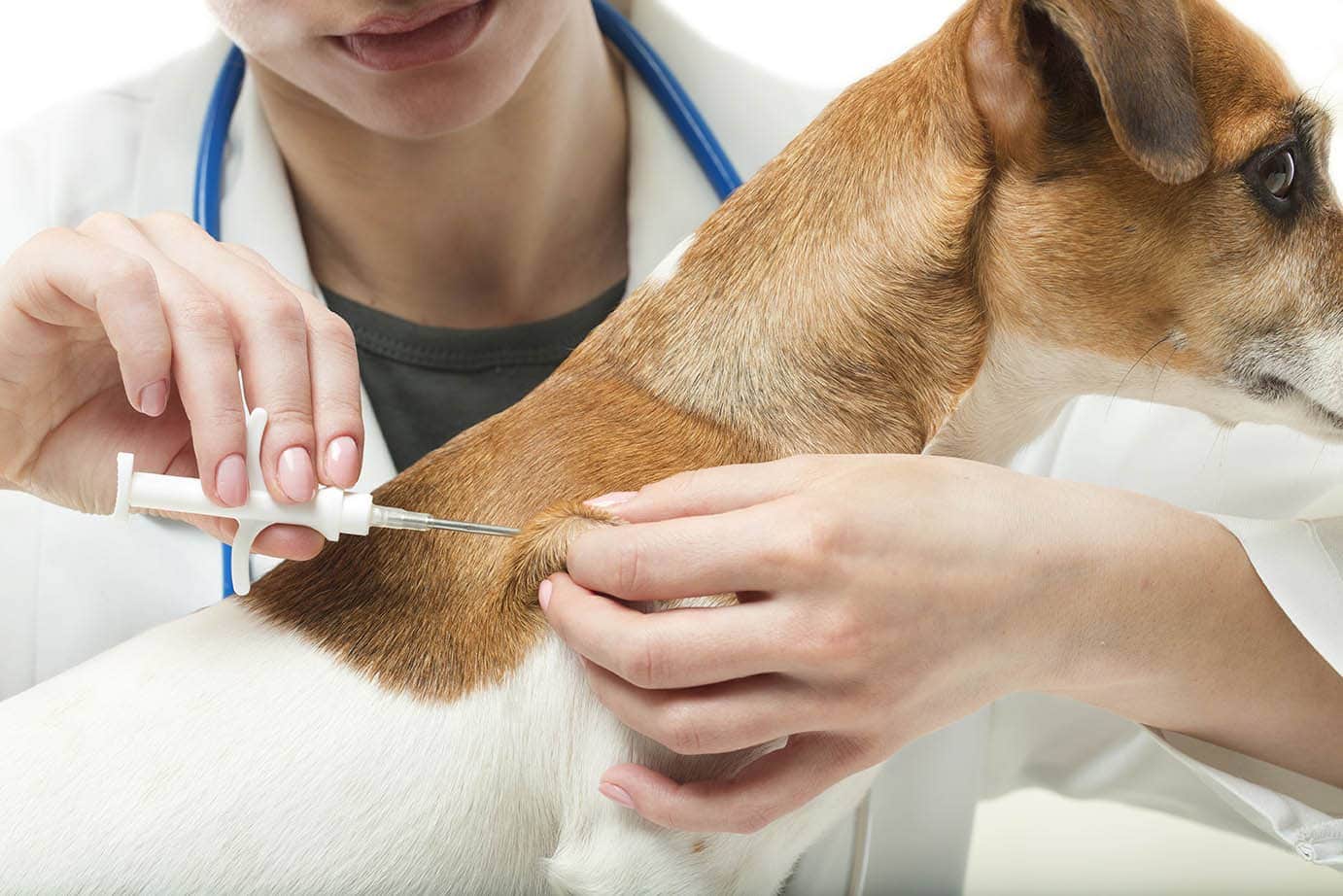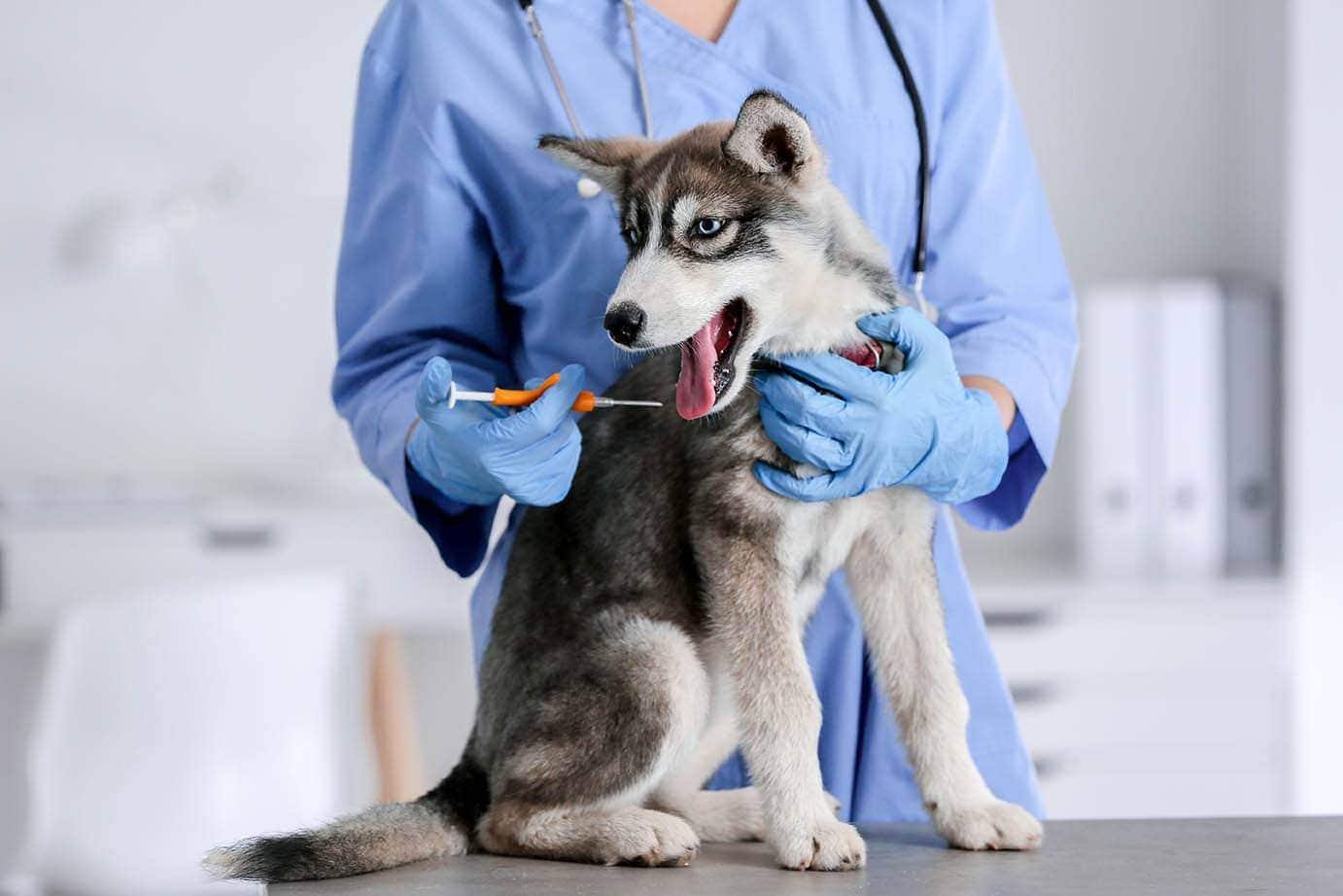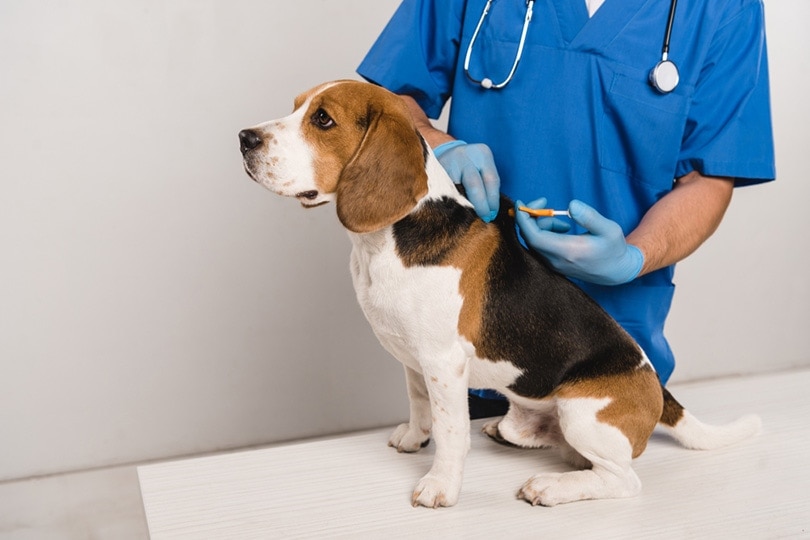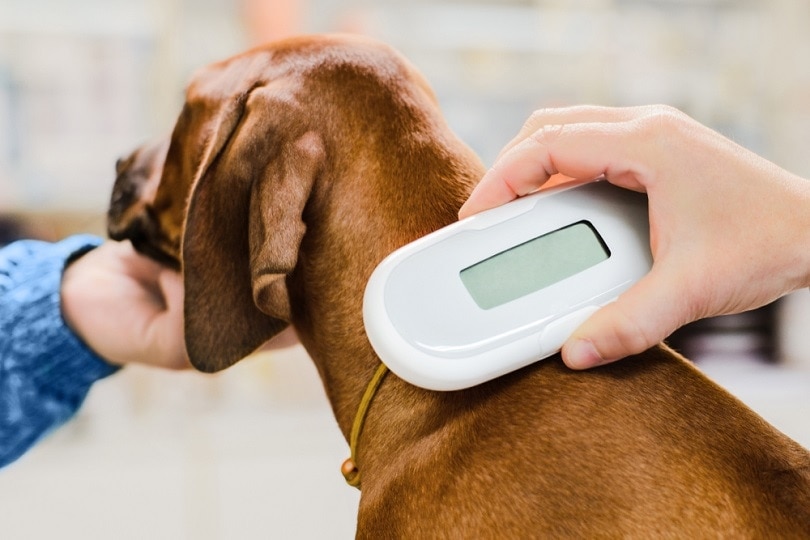How Much Does It Cost to Microchip a Dog? 2024 Price Guide
Updated on

It’s a dog owner’s worst nightmare: You come home to find your best friend missing, and you have no idea where they went. Maybe someone left the door open, or they found a weakness in the fence. It doesn’t matter —what matters is finding them before it’s too late.
If you want to have the best chance of being reunited with your best friend, a microchip will give you just that. These devices can allow a vet or animal control worker to alert you if your dog gets found, so you’ll be able to retrieve them as soon as possible.
How Does a Dog Microchip Work?
Microchips are small devices about the size of a grain of rice that get implanted just under the dog’s skin (usually between the shoulder blades or thereabouts). These chips emit a radio frequency called an RFID. When your lost pet gets found, a vet, an animal control worker, etc., will use a special scanner to read the RFID. This will give them the name of the microchip company and a code that’s unique to your dog.
The person who found your dog will then contact the microchip company and give them the number that the scanner gave them. This will bring up your information in the company’s database, and the company will then contact you to tell you where to go find your dog.
There’s little chance of your personal information falling into the wrong hands. Only the microchip company will have access to your name, phone number, or address—all the vet will see is that special number. Of course, this whole process only works if you register your device with the microchip company, so be sure to do that.

Where Should I Get My Dog Microchipped?
Most people have their vets do it. Any vet will have everything that they need to both implant and read the chips, and it’s a routine procedure that they perform all the time. Other places that can microchip your dog include animal shelters, certain rescues, and even some pet stores (especially those that also provide veterinary or grooming services).
If you adopt your dog through an animal shelter, they may already be chipped, so it’s worth checking. It may be included as part of the adoption fees, or if your dog had a previous owner, they may have been chipped then.
If that’s the case, be sure to contact the microchip company to transfer the ownership information to you so it doesn’t contact the old owners if your dog gets lost.
How Much Does It Cost?
The cost will depend on where you have it done, but if you have your vet do it, expect to pay between $40 and $50. That will include the cost of the chip and the implantation—the registration is usually free.
That may also include a charge for the vet visit itself. If that’s the case, you might be able to save money by having the chip implanted at the same time that you take your dog in for something else.
You may also be able to save money by having someone other than a vet do the procedure. Many rescue groups and animal shelters will implant a chip cheaply, and sometimes they have special clinics that will do it for as little as $10.

Is Microchipping Painful for Dogs?
Most dogs barely notice it. At worst, it will feel about the same as having blood drawn, so there will be a pinch or slight discomfort, but nothing excruciating. If you’re worried about causing your dog pain, you can have the chipping procedure done while they’re under anesthesia for some other reason, like being spayed or neutered. Just don’t put off having them chipped because of fear of the pain, as it’s much better to cause them a moment’s discomfort than to lose them forever.
Microchipping is safe as well. The worst that’s likely to happen is that the chip will get dislocated and move to a different spot on your dog’s body.
However, in some cases, you’ll see swelling, hair loss, or infection at the implantation site. Tumors have also been reported, but that concern is overblown. According to the American Veterinary Medical Association, there have only been four cases of tumors forming at the site (out of 4 million implanted microchips). Those numbers are so small as to be completely insignificant.
Microchip Registry and Lookup
Of course, these chips are only as good as their registries. If you don’t register your dog with the microchip company, that little device will do you no good whatsoever. We recommend filling it out the same day that you get it. However, you can submit it at any time, so if you forget initially, that doesn’t mean all is lost. Fill it out as soon as you remember.
When you have the chip implanted, whoever did the implantation procedure will give you paperwork to fill out. You’ll need to fill it out (it can usually be done online) and submit it so the microchip company will have your contact information. Without that, it will never be able to contact you if your lost pet gets found.
When your dog gets taken to a vet or pound, the staff will use the scanner to search for a microchip. If they find one, it will give them the name of the microchip company and a special number. The person can then contact the company to give them the number, which will bring up your information, and the company can then contact you.

Will a Microchip Help Me Find My Lost Dog?
No, microchips don’t have GPS trackers or anything like that in them. They’ll only help if someone finds your lost dog and takes them to a vet or shelter. That’s no small feat, though, so don’t neglect to get your pooch chipped on those grounds.
You can get special collars with GPS trackers on them if that’s something you’re interested in. While not perfect, these devices will give you a general idea of where your dog is if they get lost (assuming that the collar stays on, of course).
Also, don’t assume that microchipping is all you need to do. You’ll still want to keep your pup’s collar and tags on and ensure that your fence is tall and secure so they don’t escape in the first place.
Conclusion
Your dog is your best friend, and there are few pains as deep as losing them for good. If you microchip your pup, though, you’ll have a much better chance of being reunited with them if they get lost.
Microchips aren’t magical devices, but they are certainly helpful in times of crisis, and in some ways, that’s the best kind of magic there is.
Check out some of our top-trending posts:
Featured Image Credit: Iryna Kalamurza, Shutterstock












